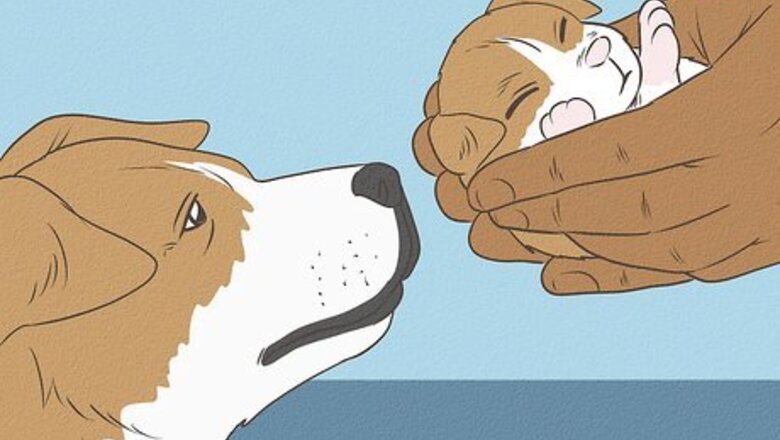
views
Preparing to Weigh the Puppies
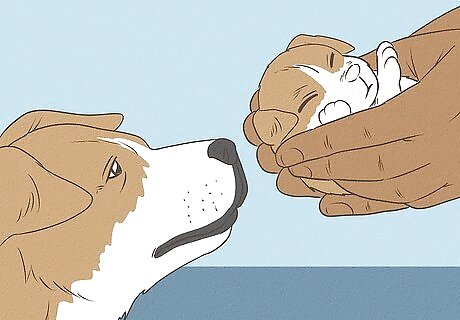
Wait until the mother will allow you to touch the puppy. Before you can weigh a puppy, you need to wait until the mother dog will allow you to touch the puppies. For a period of time after the birth, the mother will not want anyone handling the puppies. You can try to pick up one of the puppies to see how the mother responds. However, if the mother acts aggressively or defensively, leave the puppies and try again later.
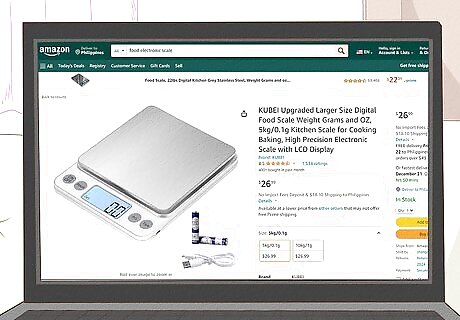
Find an appropriate scale. Digital scales are the easiest and most convenient scales to use for puppies. This will give you the most accurate reading, which is important when during your puppy’s first weeks. You may want to use an electronic kitchen food scale or postal scales. You can find these in most supercenters or online.
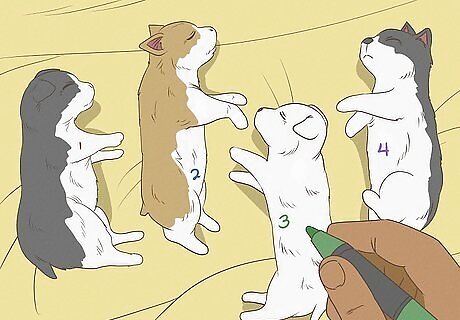
Find a way to tell apart the puppies. Often, the puppies in a litter will look exactly the same. To help tell them apart as you chart their weights, purchase a non-toxic permanent marker. Use the marker to place small marks on the belly of the puppies. You can use different colors to help tell them apart. Take care when identifying them using colored ribbons or collars as these can easily get caught and the puppy may be strangulated.
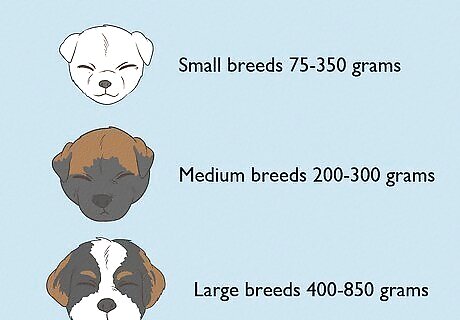
Recognize proper birth weights. Birth weights for dogs will vary depending on the breed. The puppies should be roughly the same weight at birth and as they mature. However, the size of the breed can give you a good idea of what they should weigh at birth. Small breeds will generally weigh between 75 to 350 grams. Medium breeds range from 200 to 300 grams. Large breeds usually range from 400 to 850 grams.
Weighing the Pupppy
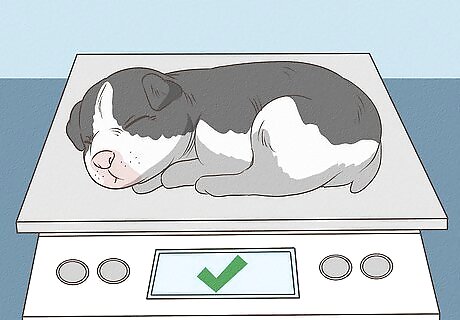
Weigh the puppy. When you weigh the puppy, do it gently. Puppies are delicate, so you should always use care. A good way to do this is to place newborn puppies in a bucket wrapped in a blanket or something soft. You can also wrap the puppy in a blanket before putting them on the scale. Make sure if you weigh the puppy in a bucket or with a blanket, you subtract the weight of the extra material. Try using the same material each time you weigh the puppy to help with accurate readings.
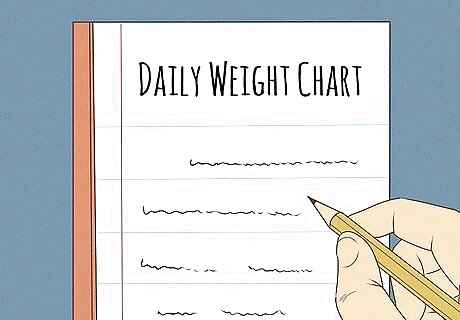
Log the puppy’s weight. Create a chart to weigh each puppy’s weight progression. The chart should record the date and the weight of the puppy. Each day, you should see an increase in the puppy’s weight. The litter should progress at relatively the same pace. Their weights should be very similar each day.
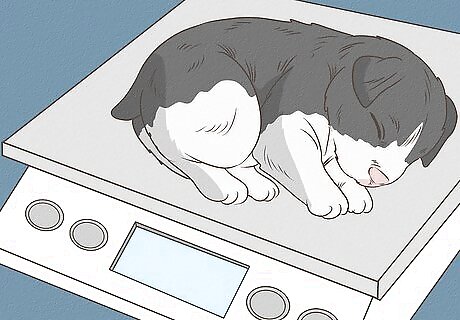
Weigh the puppies once a day. After the puppies are born, you should weigh them at regular intervals. Once a day is often enough to get a good idea of how they are progressing. Make sure to weigh them at the same time every day. You should weigh the puppies once a day for the first two weeks. After that, weigh them once a week.
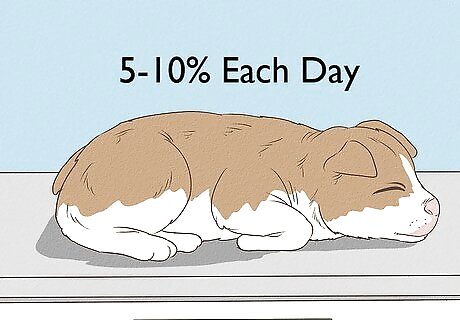
Watch for healthy weight gains. After the first 24 hours, the puppies should increase in weight. By the time the puppy is around a week old, the weight should be doubled from their birth weight. Puppies should gain 5 to 10% of their weight each day. Most puppies lose weight during the first day, and then start gaining it each day. Each breed is different with the way they will gain weight. Check each puppy’s weight against the other puppies in the litter and their daily weights.
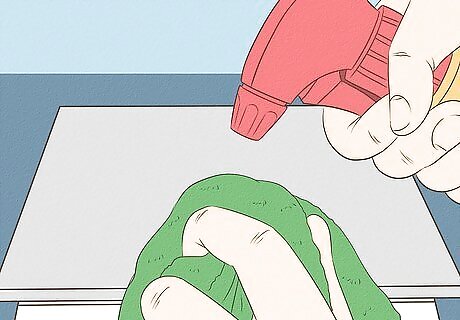
Clean the scale after weighing each puppy. When you weigh the puppies, you may gently put them directly on the scale. If you don’t use anything between the puppy and the scale, you should clean the scale with a disinfectant after you remove them. This helps reduce the risk of transmitting any germs or bacteria from puppy to puppy.
Dealing with Problems

Encourage smaller puppies to drink. Sometimes, smaller puppies may not get the same nutrition because they do not get equal access to the mother’s milk. If one of your puppies has a lower weight, help them get the milk needed from their mother. The teats between the hind legs generally have the most milk. Help the puppies nurse from those. You may want to watch the puppies to make sure larger puppies don’t push smaller ones away from the nipples.

Call the vet if there are any significant weight changes. Weight gain in a puppy should be steady and along the same level as the rest of the litter. Weight loss is not normal in a puppy. This indicates a problem, and the puppy should be immediately by the vet. If you have tried to get a smaller puppy to nurse properly but their weight is not going up, you should call the vet. Malnourishment in a puppy may point to a problem in the mother dog, like mastitis.
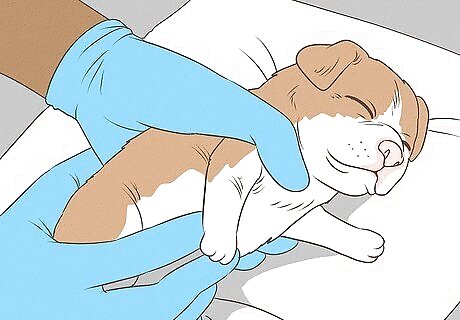
Get the puppies checked by a vet. You should get the puppies checked out by a vet during the first 48 hours. This ensures that the puppies are healthy and without any birth defects. At this visit, the vet can also check the puppy’s weight to make sure everything is normal. The vet can take this opportunity to give them any shots or medications that they need.













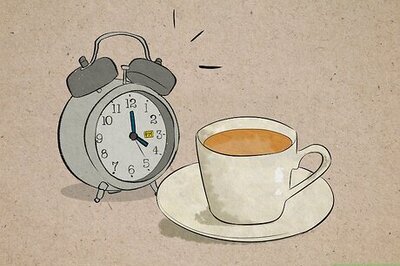


Comments
0 comment